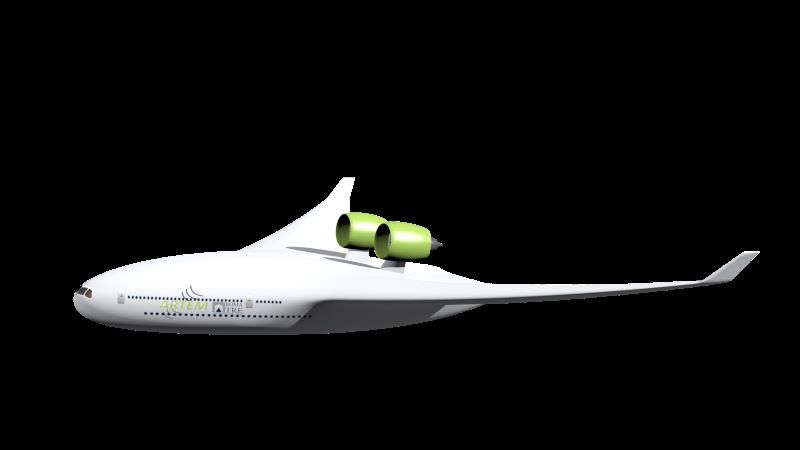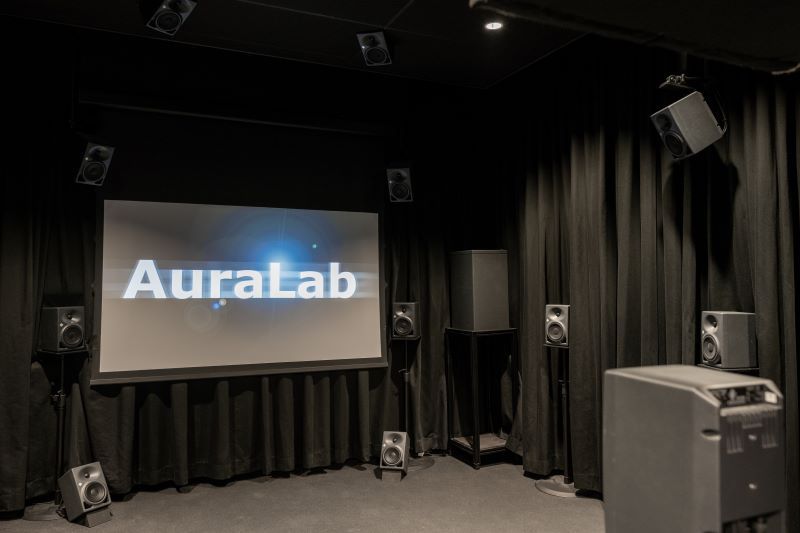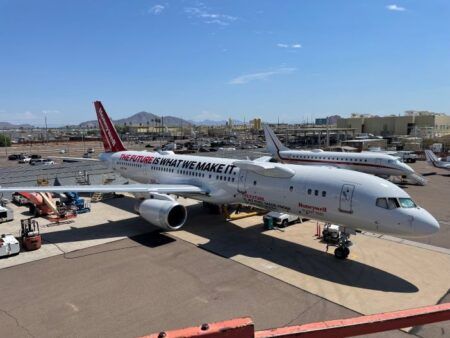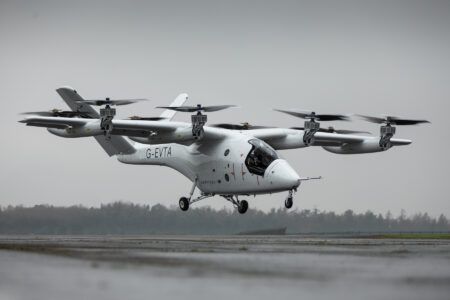Researchers from Switzerland’s Federal Laboratories for Materials Science and Technology have investigated the noise generated by Blended Wing Body aircraft concepts.
The experiments were part of a five year EU-funded project called ARTEM (Aircraft noise Reduction Technologies and related Environmental iMpact). ARTEM, which launched at the end of 2017 assessed possible noise reduction technologies for future aircraft configurations.
Researchers from 24 organisations from ten European countries examined ways to reduce aircraft noise at source and concepts to dampen engine noise using new materials. The new technologies resulted in the design of a future jet with a blended wing body (BWB).
BWB aircraft designs, whose fuselages merge into the wings, offer emissions advantages such as less air resistance and lower fuel consumption. They also offer the opportunity to lower noise emissions towards the ground by mounting engines on top of the fuselage.

The consortium also considered other noise reduction technologies such as a trailing edge with optimized flaps or modern geared turbofan engines with a large ratio of the airflow outside the combustion chamber to the airflow of the hot exhaust jet, which significantly reduces noise.
Auralization in the laboratory
The noise emissions of BWB aircraft can be estimated using simulation tools, but their effect on people can only be accounted with experimentation. Researchers from Switzerland’s Federal Laboratories for Materials Science and Technology (Empa) used an approach called auralization to investigate the effects of noise from BWB aircraft concepts and different engine variants.
Researchers generated noise simulations of overflights using computers. They checked these simulations against recordings of current aircraft arrivals and departures around Zurich Airport. As the simulated noise corresponded well with the measured data, they could be used for comparison with the simulations for the new BWB aircraft concept.
To determine how disturbing the noise emissions of the various commercial aircraft are to people when they fly over them, 31 people aged between 18 and 61 took part in the experiments in Empa’s AuraLab.
Spatial simulations were run from precisely arranged loudspeakers. These were comprised of 36 overflights: take-offs and landings of conventional and innovative aircraft types, each in different flight phases.

These noise scenarios also included details such as flap positions or the position of the landing gear as well as atmospheric conditions such as turbulence or sound reflections on the ground.
After the experiment, the test subjects filled out questionnaires, in which they reported their subjective impressions – using a common and standardized 11-point scale ranging from 0 for “not at all disturbed or annoyed” to 10 for “extremely disturbed or annoyed”. They were also asked how familiar the respective sound event sounded to them.
Resounding results
The BWB aircraft was rated 4.3 units less noisy at best than the conventional passenger jet.
The virtual aircraft in the simulation was also equipped with additional noise reduction technologies or particularly low-emission engines. In addition, the surveys showed that take-offs of this type of aircraft left a sound impression that seemed less familiar to the participants – an indication of unusual acoustic characteristics that are likely to have a positive influence on the perception of annoyance.
Reto Pieren, a researcher working on the project at Empa’s Laboratory for Acoustics / Noise Control said, “The greatest contribution to noise reduction undoubtedly comes from the shape of the aircraft, which shields the engine noise downwards. Other noise reduction technologies account for around 15% of the reduction in annoyance.”
The Empa team has published its results in the journal Aerospace Science and Technology this month.




